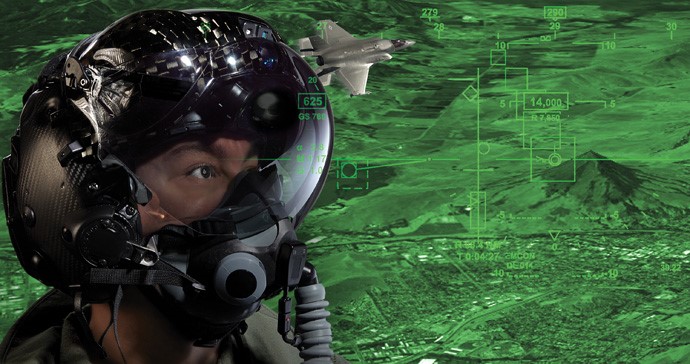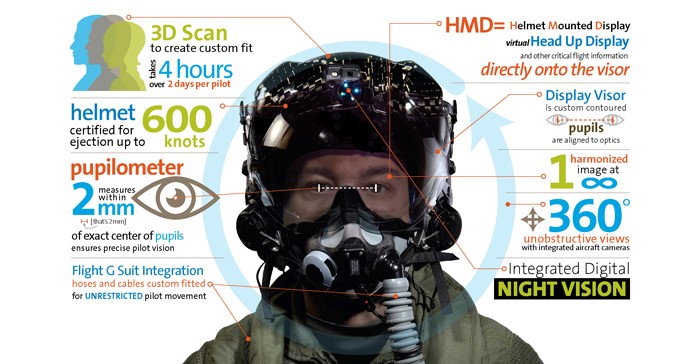
$60 billion in R&D later and the F-35 Lighting II joint strike fighter jet is finally emerging out of the woodwork, proving that it’ll provide the end-all of aerial combat superiority for the remaining half of the century. Amongst the advanced gadgets and gizmos debuting alongside the jet is a brand-new virtual-reality helmet that lets the pilots aim missiles with their eyeballs and see directly outside the aircraft without needing to look through the cockpit’s window.
Developed by defense contractor Rockwell Collins, the helmet improves pilots’ situational awareness, ensuring the aircraft’s HUD (heads up display containing horizon, airspeed, altitude, and weapons info) remains within the pilot’s field-of-view at all times. “The helmet becomes part of the system of the aircraft,” explains Phil Jasper, executive vice president of government systems for the Rockwell Collins.

When engaging in high-speed aerial combat across six-degrees of freedom, maintaining visual contact is of utmost importance. To that end, footage from six cameras provides the wearer with a 360-degree field-of-view, so the pilot’s vantage point entirely remains outside of the aircraft. This way, if one were to cock his head downward, he’d be greeted with a view of the earth rather than his legs.
Each helmet weighs approximately five pounds and must be custom built for each pilot and followed-up with a two day fitting process that adjusts multiple variables such as horizontal and vertical alignment of the pupils and eye spacing. Eliminating motion sickness was tantamount, explains Jasper, adding that “the visual effects and how information is portrayed on the visor has gone through a lot of engineering.”

Since the F-35 is a solo-piloted aircraft, Rockwell Collins has constructed a second helmet specifically designed for simulation training, that way pilots are amply acquainted with the helmet before ever deploying the aircraft.
Rockwell Collins is considering exploring other options for the helmet, including firefighting and construction, but since the actual the device is part of a $100 million package, the prospect of expanding into civilian industries is unlikely in the near future.
Source: Wired via Rockwell Collins
Advertisement
Learn more about Electronic Products Magazine





